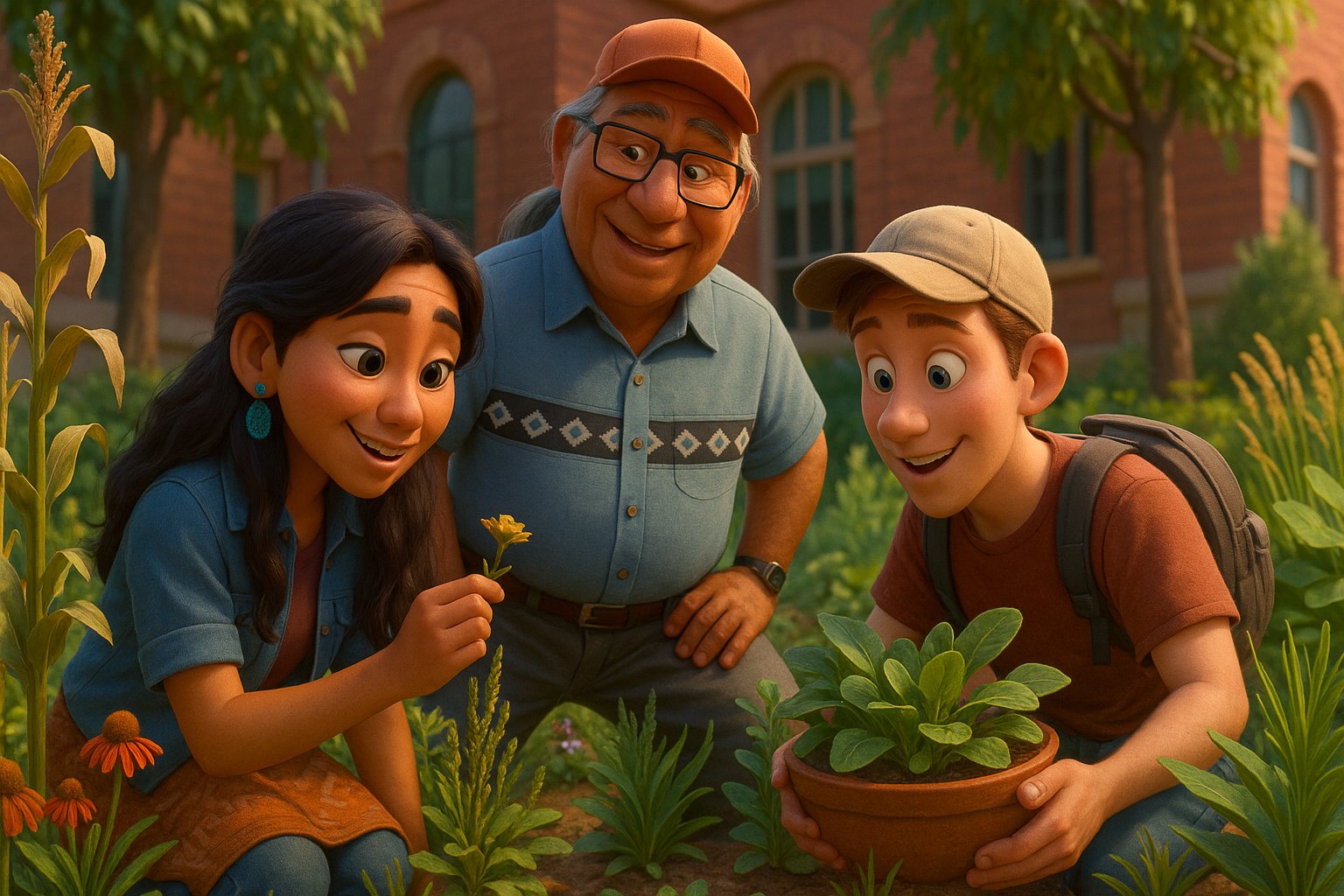Cache Valley Locals
Archives
Cache Valley Shoshone Indigenous Garden: A Story of Local Roots
SIGN UP FOR OUR NEWSLETTER
Shoshone Indigenous Garden Reclaims Ancestral Roots in Cache Valley |
A powerful new partnership between a Shoshone elder, USU students, and the Stokes Nature Center is bringing food sovereignty to the forefront in Nibley. |
A piece of ancestral wisdom is taking root right here in Cache Valley, challenging how we think about land, food, and history.
On a three-acre plot in Nibley, an ambitious project is underway to cultivate a garden filled exclusively with native plants, a living tribute to the region's Cache Valley Shoshone Indigenous heritage.
The visionary behind this effort is Darren Parry, a respected tribal elder of the Northwestern Band of the Shoshone Nation and a professor at both Utah State University and the University of Utah.
For Parry, this work is deeply personal, inspired by the lessons of his grandmother, who taught him to see the land not as a commodity, but as a relative.
He carries her teachings into his university classrooms, where the idea for the garden was born.
During a discussion on food sovereignty, his students wondered aloud what it would take to create a space dedicated to the very food systems that have sustained tribes for generations.
This question was the catalyst for a powerful community collaboration.
Finding a home for such a unique vision required the right partner, which emerged in the new Stokes Nature Center.
The center, located on an 11-acre nature reserve in Nibley, immediately offered space for the Indigenous food garden, seeing it as a perfect alignment with its own educational and conservation mission.
The result is a garden that is both a look into the past and a model for the future.
Among the plantings are 1,500-year-old bush beans discovered in a cave, Iroquois cornbread beans, and Cherokee moon and star watermelons.
These are not just plants; they are stories of resilience, culture, and survival, grown without any genetic modification.
Parry emphasizes that this garden is about more than just harvesting crops; it's about re-establishing a relationship of reciprocity with the Earth.
It serves as a tangible lesson in sustainable agriculture for a modern world.
A community celebration is planned for later this fall, coinciding with the grand opening of the nature center.
The event will feature a meal prepared from the garden's harvest, showcasing for the entire Cache County community what is possible when ancient wisdom is honored.
For many, the project represents a profound opportunity to reconnect with the authentic, natural history of the land we all call home.
FAQ
What is the Indigenous food garden in Cache Valley?
The Indigenous food garden is a project in Nibley, Utah, led by Shoshone elder Darren Parry and Utah State University students. It is located at the Stokes Nature Center and focuses on growing native and ancestral plants to promote food sovereignty and cultural education.
Who is Darren Parry?
Darren Parry is a tribal elder for the Northwestern Band of the Shoshone Nation, an author, and a professor at Utah State University and the University of Utah. He is a prominent voice for Indigenous history and environmental stewardship in Utah.
Where is the new Stokes Nature Center located?
The new 11-acre Stokes Nature Center is located in Nibley, a city in Cache County just south of Logan. It hosts the new Indigenous food garden and aims to connect the community with the natural world through education and conservation. |

